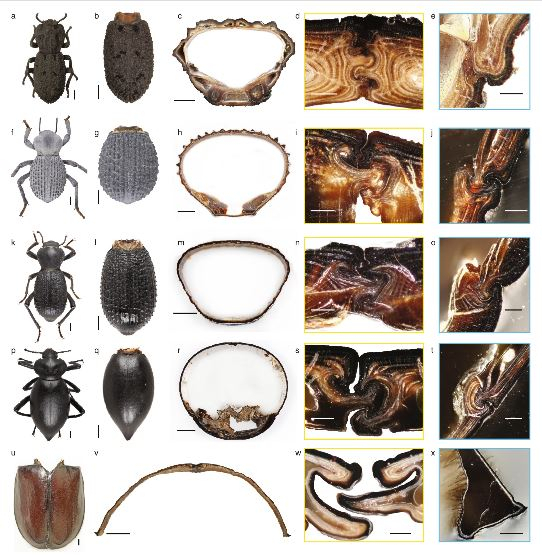It is a beetle that can survive being run over by a car, it can withstand bird pecks, animal stomps, and also survive being run over by a car. Now scientists have found the secret behind the crush resistance ability of the diabolical ironclad beetle.
This creature with about 2 cm in length, also known as Phloeodes diabolic, is mostly found in wood forests of the US west coast. Its wing covers are hardened and fused together, just like some other species of flightless beetle. It has a gnarly black armor that protects this species from being crushed.
Recently scientists have explained how tough this armor is. The diabolical ironclad beetle can withstand much greater forces than other members of the same family from similar habitats. They also revealed what helped it to survive loads 39,000 times its body weight.
Prof David Kisailus, co-author of the study from the University of California, Irvine said, "We were impressed. Especially given that this beetle does not contain any mineral – just organic components." As per a study, published in the journal Nature, Kisailus and other researchers studied the diabolical ironclad beetle. They examined the structure of their exoskeleton to find out what makes this species so tough.
The Research Findings

The team of scientists found that the beetle's fused elytra—a protective case that normally sheaths wings—were interlocked. The diabolical ironclad beetles had had a greater number of interlocking sections. In an experiment, the researchers found that this feature helps these beetles to distribute stress and make the joint more robust.
They also noticed that the elytra were layered and rich in proteins. As per the experiments, it was also found that when weight was applied where the elytra join, the layers peel apart and release strain, leaving the joint intact.
Shell of Ironclad Beetle
The elytra are connected to the shell of the beetle on its underside and protect vital organs. The flexible joints also act like springs and absorb energy when the forces are being put on the diabolical ironclad beetle. The scientists also found that the features observed in their exoskeleton could be used to create some techniques for joining materials.
The researchers said that incorporating such physical features produce joints which are stronger than fasteners typically used in turbine engines. Kisailus said, "Given that nature has been optimizing and performing experiments for hundreds of millions of years, there are abundant resources to provide inspiration for next-generation materials."
While many beetle species fly away from threats, this specific species, diabolical ironclad beetle, had to toughen up to survive, said the curator of beetles at the Natural History Museum in London, Max Barclay, who is not involved in the study. If applied to product designing, this interwoven structure may one day revolutionize the future of tiny products.
Unlike other beetles that live for a few weeks, this particular beetle could live for about seven or eight years. He also said that the diabolical ironclad beetles are doing the "beetle-equivalent of living for 1,000 years, so they have to protect themselves against risk in a way that shorter-lived creatures don't."









